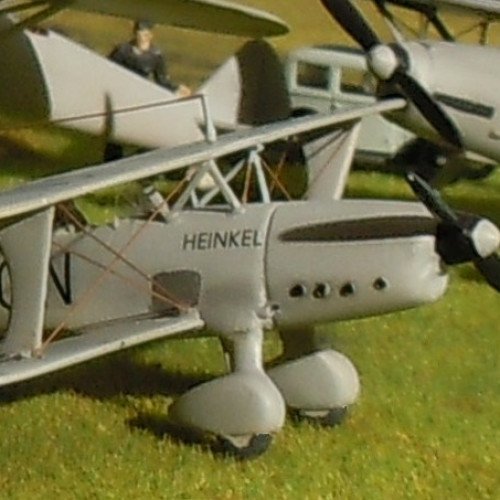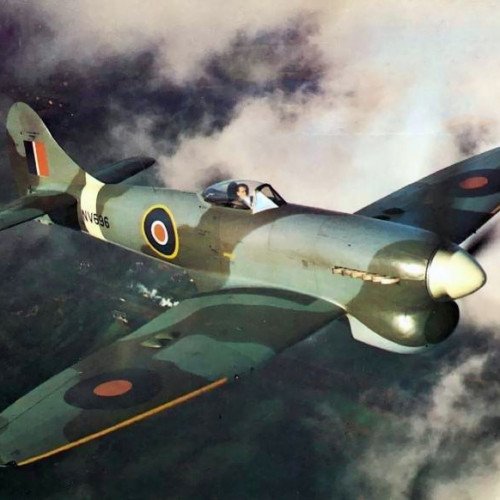Heinkel He 74 vs Hawker Tempest

Heinkel He 74
The Heinkel He 74 was a light fighter aircraft developed in Germany in the early 1930s. It was a conventional, single-bay biplane with staggered, unequal-span wings braced with an I-type interplane strut. The pilot sat in an open cockpit, and the undercarriage was of the fixed, tailskid type. It was designed in response to a RLM requirement for a Heimatschutzjäger - a light fighter aircraft suitable for purely defensive duties and which would have a secondary role as an advanced trainer for fighter pilots. Although it was not strictly a requirement of the specification, firms submitting designs were urged to use a monoplane layout. During trials in 1934, the He 74 outperformed its competitors, but in the end, the RLM awarded it third place, behind the Focke-Wulf Fw 56 and Arado Ar 76, believing that since the fighters then being developed were all monoplanes, this configuration was essential for an advanced trainer as well.
Statistics for this Xoptio

Hawker Tempest
The Hawker Tempest was a British fighter aircraft primarily used by the Royal Air Force (RAF) in the Second World War. The Tempest, originally known as the Typhoon II, was an improved derivative of the Hawker Typhoon, intended to address the Typhoon's unexpected deterioration in performance at high altitude by replacing its wing with a thinner laminar flow design. Since it had diverged considerably from the Typhoon, it was renamed Tempest. The Tempest emerged as one of the most powerful fighters of World War II and was the fastest single-engine propeller-driven aircraft of the war at low altitude.[2] Upon entering service in 1944, the Tempest was used as a low-level interceptor, particularly against the V-1 flying bomb threat, and as a ground attack platform, in which it supported major events such as Operation Market Garden. Later, it successfully targeted the rail infrastructure in Germany and Luftwaffe aircraft on the ground, as well as countering such attacks by German fighters. The Tempest was effective in the low-level interception role, including against newly developed jet-propelled aircraft such as the Messerschmitt Me 262. The further-developed Tempest II did not enter service until after the end of hostilities. It had several improvements, including being tropicalised for combat against Japan in South-East Asia as part of the Commonwealth Tiger Force.